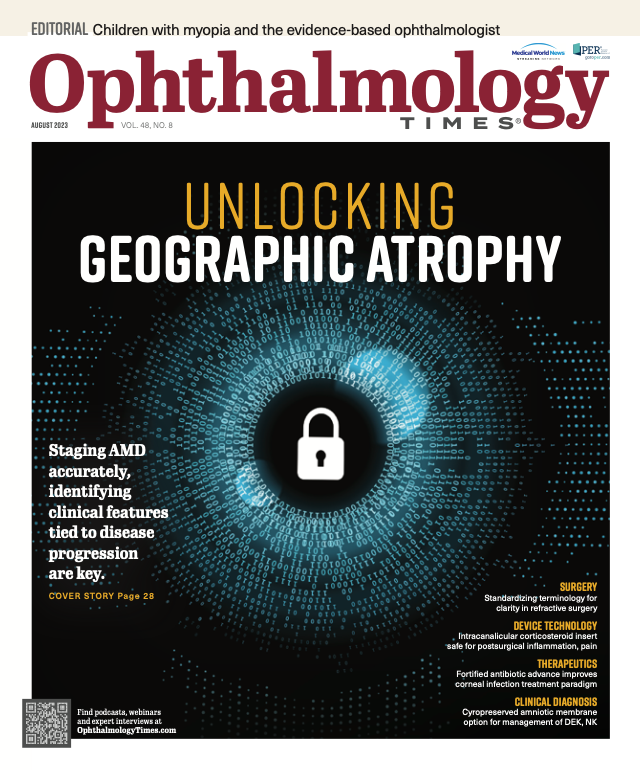Publication
Article
Digital Edition
Standardizing terminology for clarity in refractive surgery
Language can drive understanding, trust, and better outcomes for patients
(Image Credit: AdobeStock)

It was the revered Chinese philosopher Confucius who said, “The beginning of wisdom is to call things by their proper name.” More than 2 millennia later, his observation holds tremendous relevance in the field of refractive surgery, where precision in terminology is an absolute necessity for fostering patient understanding, trust, and better outcomes.
Indeed, language is more than a mere tool for communication; it forms the cornerstone of cognition and perception. The way we express our thoughts and the words we select subtly mold our understanding and influence the way we perceive the world. The use of technical jargon in medicine can often be a double-edged sword. Although it helps to maintain precision and succinctness, it can unintentionally alienate patients, creating a chasm between the patient and their physician.
This gap of understanding further widens when multiple terminologies are used interchangeably for the same procedure. For patients, this mix introduces a confusing layer of uncertainty and apprehension. The situation can be likened to standing in a vast supermarket, surrounded by a dizzying array of choices, leading to a state of paralysis. It raises questions, adds to stress, and makes decision-making a more uncertain and complex task for patients.
Moreover, the practice of using brand names for specific surgical procedures crosses into the territory of professional and ethical impropriety. It has the potential to create an unjust tilt in the decision-making balance, giving undue advantage to a particular manufacturer or brand. This can cloud the core objective of medical conversations, jeopardize their neutrality, and obscure the comprehension of patients. The foremost role of terminology in this context should be to guide patients by providing clarity as they navigate the decision-making process for their eye health.
In refractive surgery, the responsibility of choosing the proper terminology for discussing surgical procedures with patients lies unequivocally with physicians. This responsibility should not be relegated to manufacturers, who often lean toward brand-centric terminologies. To address this, the Refractive Surgery Alliance Terminology Committee (RSATC) was assembled to introduce standardized terminology in 3 major areas:
Replacement of the crystalline lens for management of refractive error and/or presbyopia
Femtosecond laser-assisted lenticule extraction procedures
Transient hyperesthesia with ocular surface discomfort following any ocular surgery
Under the astute leadership of Tanya Trinh, MD, the RSATC sought opinions from refractive surgeons across the globe. The team conducted a thorough analysis of potential terms, keeping patient comprehension, accuracy, and brand neutrality at the forefront of their considerations. The terms proposed by the committee, along with their rationale, are presented here.
Lens replacement
In recent years, advanced lens implants have surfaced as an excellent solution for patients with presbyopia who wish to reduce their dependence on glasses or contact lenses. This procedure has been known by various terms, such as refractive or clear lens exchange, laser or lifestyle lens upgrade, lens implant focusing enhancement, etc. However, the committee favored “lens replacement” for its simplicity and comprehensibility. The term aligns naturally with familiar procedures such as knee or hip replacement, suggesting the removal and replacement of a dysfunctional body part to enhance functionality and lifestyle. It also allows for the addition of descriptors such as “custom,” “precision,” or “dysfunctional” based on the specific needs or context of the surgery.
LALEX
In the United States, ZEISS has coined the term SMILE (small incision lenticule extraction) for this procedure. However, other countries use names such as CLEAR, RELEX, FLEX, SILK, and SmartSight. Given the confusion experienced by patients during the early days of laser-assisted in situ keratomileusis (LASIK) due to the variety of terminologies used, the committee aimed to avoid such issues this time around. The chosen term, laser-assisted lenticule extraction (LALEX) maintains brand neutrality and comprehensibility while highlighting the procedure’s distinct nature from LASIK. The German Commission for Refractive Surgery has also adopted a similar term, providing some international continuity.
STODS
Ocular discomfort post surgery is a common phenomenon across a variety of eye surgeries, including cataract, refractive, glaucoma, and strabismus procedures. With various underlying etiologies from corneal nerve incision to preexisting dry eye, it’s crucial to have a term that validates this discomfort. Our chosen term, surgical temporary ocular discomfort syndrome (STODS), emphasizes the temporary nature of the discomfort while avoiding the connection to any specific type of surgery. The term is inclusive and easily comprehensible, which makes it accessible to a nonmedical audience.
In adopting the terms lens replacement, LALEX, and STODS, the refractive surgery field takes a significant step toward creating a universal language that enhances understanding, communication, and education for patients and physicians alike. Building on the wisdom of Confucius, clear and precise language serves as the foundation for enlightenment. Standardized terminology in refractive surgery will undeniably elevate patient comprehension and trust in the surgical process, empowering patients to make informed decisions, reducing patient anxiety, and bolstering patient confidence in the choices they make regarding their eye health.
As an RSA fellow and an associate academic director of the RSA fellowship, we have already begun to use these terms in our daily practice. The authors wish to thank the members of the RSATC: Tanya Trinh, MD; Balamurali Ambati, MD, PhD; Dagny Zhu, MD; Lance Kugler, MD; R. Luke Rebenitsch, MD; Guy Kezirian, MD, MBA; Arthur Cummings, MD; and Brett Mueller II, DO, PhD; as well as the RSA membership for their leadership and commitment to improving patient care.
Brad Sifrig, MD
P: 919-876-4064
Sifrig joined Porter Ophthalmology in Raleigh, North Carolina, as a fellow of the Refractive Surgery Alliance to further his mastery of refractive surgery.
Radhika Rampat, MBBS, FRCOphth
E: RadhikaRampat@me.com
Rampat is an ophthalmic specialist based in London, United Kingdom, and recently became associate director of the Refractive Surgery Alliance global fellowship network as part of the World College of Refractive Surgery & Visual Sciences.

Newsletter
Don’t miss out—get Ophthalmology Times updates on the latest clinical advancements and expert interviews, straight to your inbox.





